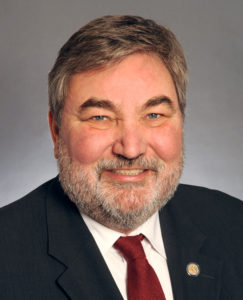Over the years, there has been a growing funding disparity between metro and rural schools. When legislative champions accomplish major education policy and funding reform to level that playing field, MREA recognizes their efforts on behalf of all Greater Minnesota students.
MREA approached many legislators in 2013 about this growing funding gap. While referenda levy dollars had become a basic part of most district operating budgets, many districts were left behind in the referenda game.
 One legislator who heard MREA member concerns and took action was Senator Rod Skoe.
One legislator who heard MREA member concerns and took action was Senator Rod Skoe.
MREA recognizes his commitment to Greater Minnesota education and legislative leadership with the 2014 Distinguished Service Award.
Sen. Skoe shepherded a proposal into the Tax conference committee. He set aside his concerns about school board levy authority so he could help improve the budgets of these rural school districts in the gap.
Because of his support, the Minnesota Legislature passed a provision in the 2013 Tax Bill to increase state aid for districts with low property wealth that have small voter approved levies. The increase in equalization aid is a benefit to small rural school districts, offsetting the higher tax rates required to raise the same amounts of levy in low-property wealth districts.
In 2014, thanks to the continued leadership of Sen. Skoe, the Legislature expanded another educational funding program, now called Local Optional Revenue. This program removes geographic parameters and population minimums for school districts and grants authority to all districts to raise $424 per student.
Sen. Skoe helped transform a $300 base into a $724 option for all districts, granting more flexibility to smaller, rural schools and equalizing school funding in ways that help all Minnesotans.
A graduate of Kelliher High School and a former director for the Clearbrook-Gonvick School Board, Sen. Skoe ensured that school districts throughout Minnesota now have the same options available to them.
These changes work in collaboration with other broad education reforms all aimed at closing the gap that’s been widening between metro and rural school districts, while simultaneously strengthening our educational system.




